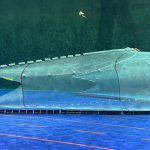It is reported that NOAA Fisheries has proposed changes to the rules governing the use of other species caught in the expanding arrowtooth flounder fishery in the Gulf of Alaska. According to NOAA from early 1970s the biomass of arrowtooth flounder has increased sevenfold in the Gulf of Alaska and arrowtooth flounder are currently the most abundant groundfish species in the Gulf ecosystem.
Doug Mecum, Acting Administrator of the Alaska Region of NOAA Fisheries, informed that it is high time to reduce discards of marketable groundfish such as flathead sole, rockfish, and skates caught during the arrowtooth flounder fishery in the Gulf of Alaska. It is reported that in 1998, 13,000 tons of arrowtooth flounder were caught in all fisheries in the Gulf of Alaska, but only 2,057 tons were retained.
In 2007, 25,371 tons were caught and 15,108 tons were retained, processed and marketed while the rest are discarded because they are too small to keep or because they are damaged. Under the proposed regulations, fishermen would be allowed to keep certain amounts of deep-water flatfish, rex sole, flathead sole, shallow-water flatfish, Atka mackerel, skates, rockfish and sablefish caught in their arrowtooth flounder nets, when the directed fisheries for the non-arrowtooth species are closed.
The commercial market for arrowtooth flounder is small but growing. The large flatfish’s flesh contains enzymes which cause the muscles to break down when cooked. However, researchers have discovered the enzymes can be neutralized. Scientists estimate that the allowable biological catch of arrowtooth flounder in the Gulf of Alaska would be about 230,000 tons per year.








